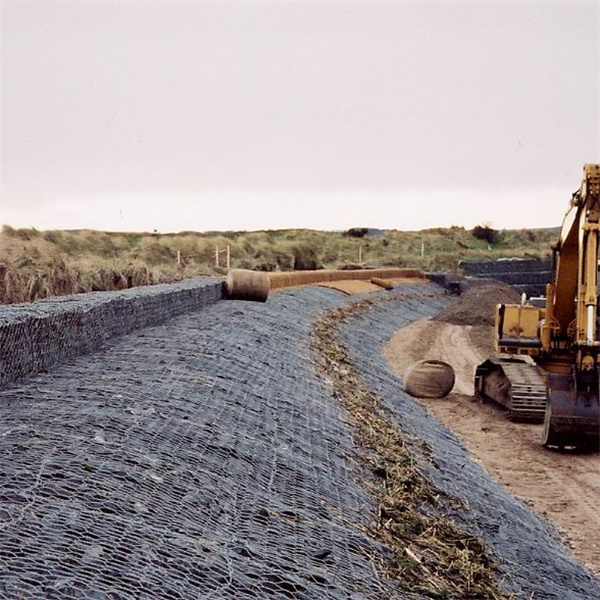កញ្ញា . 25, 2024 17:02 Back to list
gabion fill
Understanding Gabion Fill An Essential Component in Modern Engineering
Gabions are wire mesh cages filled with natural stones, rock, concrete, or other materials, used in various construction and landscaping projects. The term gabion originates from the Italian word gabbione, which means large cage. This sturdy design not only serves aesthetic purposes but also plays a vital role in providing structural integrity in engineering applications. One of the most critical aspects of gabion usage is selecting the appropriate fill material, often referred to as gabion fill.
The Importance of Gabion Fill
Gabion fill acts as the primary material that provides strength and stability to the gabion structure. The right fill material can influence the durability of the gabion wall, its capacity to withstand hydraulic pressures, and its overall environmental impact. Various types of materials can be used as gabion fill, each with unique characteristics and benefits. The choice of fill material often depends on the specific requirements of the project, including environmental conditions, aesthetic preferences, and budget considerations.
Types of Gabion Fill Materials
1. Natural Stone The most common choice for gabion fill is natural stone. Rocks are preferred for their durability, availability, and aesthetic appeal. Depending on the project, stones can vary in size and shape. When choosing stone fill, engineers often opt for angular rocks as they interlock better, offering enhanced stability. The weight and density of natural stone can also provide resistance against erosion and hydraulic pressures.
2. Recycled Materials Many modern engineering projects emphasize sustainability. As such, recycled materials are increasingly being used as gabion fill. Crushed concrete, reclaimed bricks, and even recycled glass can serve as eco-friendly options. These materials are not only cost-effective, but they also reduce waste and promote a circular economy. However, the performance of recycled materials should be carefully evaluated to ensure they meet structural requirements.
gabion fill

3. Gravel and Aggregate Another popular option includes using gravel or aggregate as gabion fill. These materials can provide excellent drainage, reducing water pressure and the risk of failure in gabion structures. The use of gravel is particularly beneficial in areas prone to heavy rainfall or flooding, as it facilitates the flow of water away from the structure.
4. Geosynthetics In some cases, gabion fills may include geosynthetic materials that improve the performance of the overall structure. Geotextiles, for instance, can enhance drainage and filtration while providing additional stabilization. The combination of traditional fill materials with modern geosynthetics can produce robust engineering solutions tailored to specific environmental challenges.
Benefits of Using Gabion Structures
Gabion structures offer numerous benefits, making them a favored choice in civil engineering and landscaping. First and foremost, they are highly adaptable and can be tailored to suit various landscapes, from riverbanks to roadways. Their permeable nature allows water to flow through, mitigating the risk of erosion. Additionally, gabions can help control sediment transport and stabilize slopes, making them ideal for use in construction and environmental protection projects.
Furthermore, gabion fills made from natural materials enhance the aesthetic appeal of landscapes. Over time, these structures can become integrated into their environment, often becoming captivating focal points in parks and garden designs. The low maintenance requirements of gabion walls are also a significant advantage, as they do not require regular maintenance compared to traditional concrete or masonry walls.
Conclusion
Gabions and their fill materials represent a versatile solution to many engineering and landscaping challenges. The right selection of gabion fill materials can significantly influence the structural integrity and ecological impact of the project. As construction methods evolve, the integration of sustainable materials continues to gain traction. Whether using natural stone, recycled materials, or innovative geosynthetics, gabion structures exemplify how traditional engineering can intersect with modern sustainability principles to create effective, long-lasting solutions for our built environment.
-
Why PVC Coated Gabion Mattress Is the Best Solution for Long-Term Erosion Control
NewsMay.23,2025
-
Gabion Wire Mesh: The Reinforced Solution for Modern Construction and Landscape Design
NewsMay.23,2025
-
Gabion Wall: The Flexible, Seismic-Resistant Solution for Modern Landscaping and Construction
NewsMay.23,2025
-
Gabion Wall Solutions: The Durable, Decorative, and Affordable Choice for Every Landscape
NewsMay.23,2025
-
Gabion Basket: The Durable and Flexible Alternative to Traditional Retaining Walls
NewsMay.23,2025
-
Gabion Basket: The Proven Solution for Slope Stability and Flood Control
NewsMay.23,2025
-
Versatility of Chain Link Fence Gabion
NewsMay.13,2025






